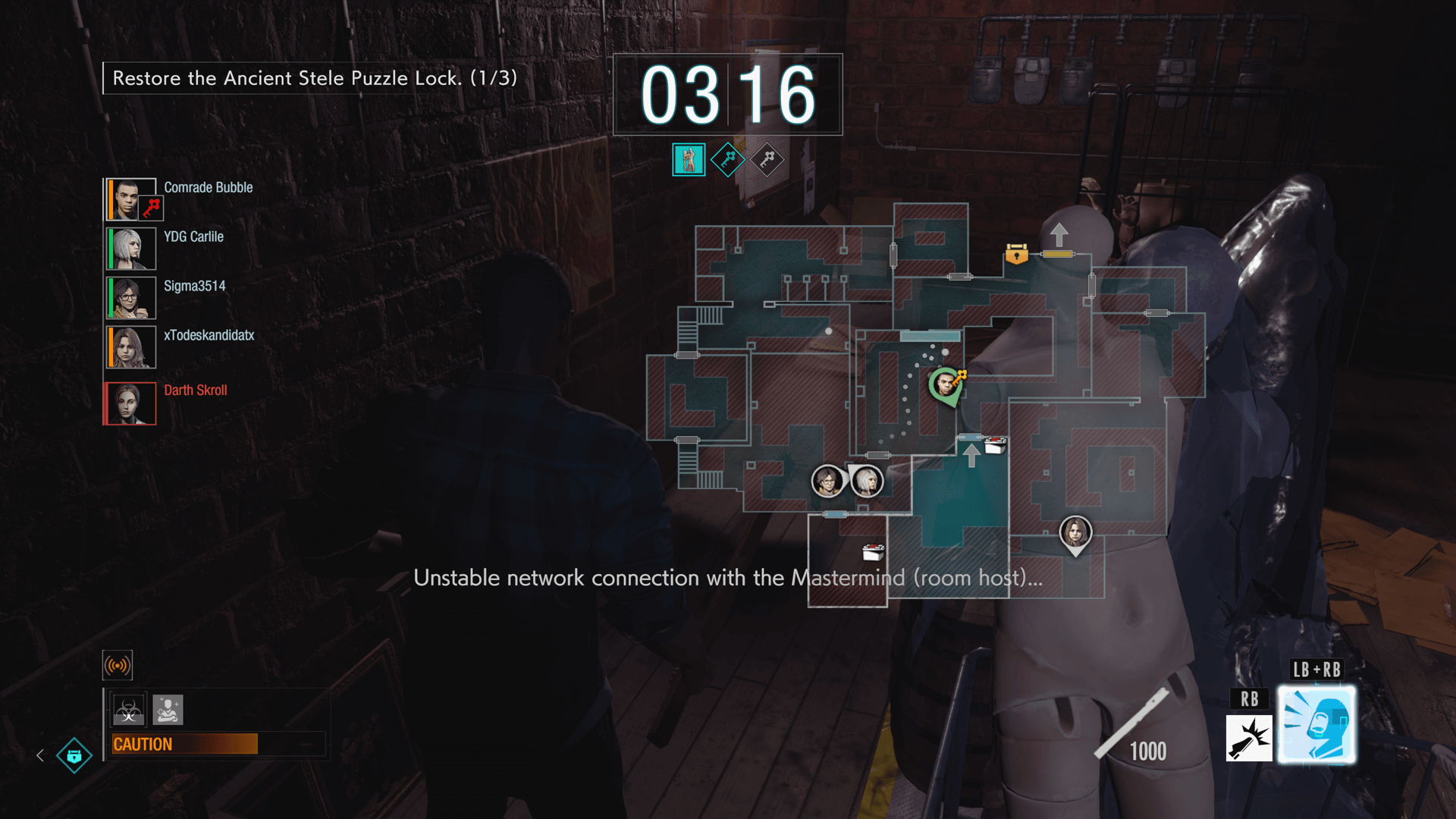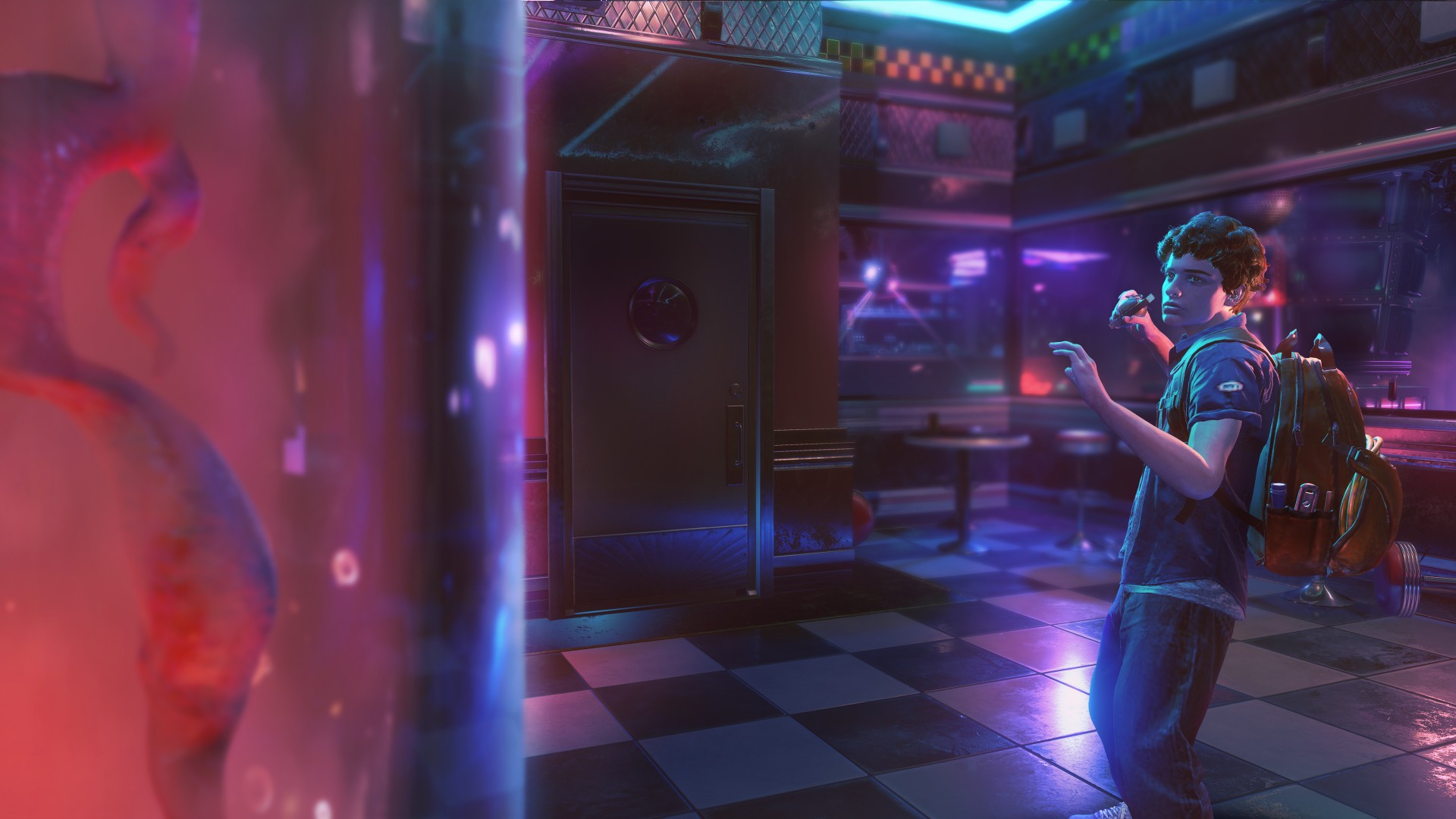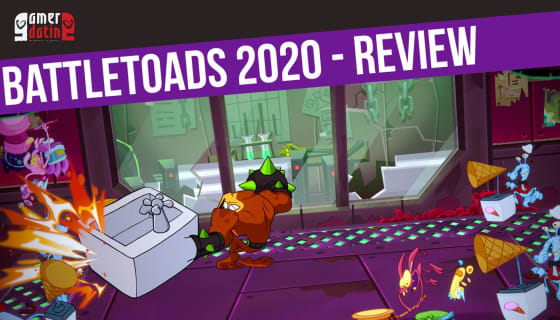Resident Evil 3 Remake and Resistance Review - Two games, each a mirror of the other. For better or worse.
Posted By:
![]() Ryan - April 17, 2020
Ryan - April 17, 2020

Two games, each a mirror of the other. For better or worse.
Make no mistake, Resident Evil is here to stay. At least, that’s what Capcom wants us to think. After a dearth of high quality, AAA survival horror games in recent years, the Resident Evil 3 (RE3) / Resident Evil: Resistance (RE:R) double-pack could not have come out at a better time.
Riding the coat-tails of last year’s excellent Resident Evil 2 remake (RE2R) (being released a mere 15 months later), this was a targeted, highly-anticipated product, which sort of does what I can only imagine Capcom wanted it to do.
I should preface this review by saying that eight-year-old me never played Resident Evil 3: Nemesis when it came out in 1999, barely 18 months after Resident Evil 2, so I am hampered neither by nostalgia nor preconceived expectations. I will also be reviewing both games together as they were released as one product.

You can certainly see the graphics revamp are well received and look good.
Both games use the RE engine (unsurprisingly) which makes for a slick, nearly photo-realistic experience of deep shadows, largely well-designed character models, floating dust and almost palpable atmosphere. Cutscenes are a treat to watch and animations flow naturally; zombies stumble believably, fire wreaks (static) havoc in the environment and the sewers are a cesspool of questionably-coloured liquids offset by glistening brickwork.
Both games also retain the same basic UI as RE2R: an over-the-shoulder camera, a limited, but easily read, inventory and small prompts that hover interactive items when you get close enough. In RE3, as in RE2R before it, this works to the game’s advantage. Why spoil the creepy atmosphere by showing you too much of the environment or by flashing giant hints about the items scattered around?

Jill Valentine and the model design is certainly impressive. It is a shame the UI struggles.
In RE:R, however, the UI is often at odds with the gameplay. Whilst the specifics will be discussed below, you need to know two things about RE:R in relation to the UI. The first is that it is an asymmetrical, 4 vs. 1 survival horror game and the second is that it borrows liberally from the hero shooter genre.
In many co-op games, there are cues about where your partners are, whether through visible outlines showing through walls, the flashes of a torchlight/gunfire nearby or a level design which encourages you to stick together through (mostly) linear levels. Not so here. If you are not paying attention, or lost to the whims of lag, be prepared to do one of two things: give up all hope of finding a partner within the next ten seconds through anything short of a miracle in the (cramped) maze-like maps or (and this is the option I chose) play with the map permanently on. The map isn’t mentioned in the ‘Survivor’ tutorial (at least, at the time of writing), in fact I only discovered it was accessible after getting frustrated trying to find my way back to the objective and pressing the same button it is assigned to in RE3, but it does reveal the location and facing of other player characters, as well as important objects in the environment.

Get used to seeing both the map and that message.
As for the hero shooter elements, the bottom right corner of the UI displays icons intended to reflect your character’s unique abilities. Mostly these are easy to understand after a few games, but, at a glance, can be a bit opaque. Fortunately, the cooldown representation IS easy to track.
But playing with the map (or otherwise easily losing your team-mates and becoming easy prey) and constantly checking an extremely video-game-y element do detract from the (hopefully) intended tense atmosphere created by the constantly shrinking time-limit displayed prominently at the top of the UI.
Resident Evil's sound design is on point.
Negativity aside, RE:R and RE3 both boast largely well-delivered acting and sound design. Footfalls are crisp, the different enemy types are mostly distinguishable based on audio cues alone and the music feels (in the majority of cases) spot on. The worst aspect as far as I’m concerned are the weapon noises, which sometimes felt a bit flat compared to the weighty animations and effects shown in-game.
Those animations and effects can be misleading though. Both games seem to have retained the random critical chance from RE2R with most zombies requiring a variable number of headshots to put down. I played through the six-hour RE3 campaign on the easier two difficulties and, whilst ammunition rarely became a problem in either, there was a noticeable bullet sponge effect in my Standard playthrough. Actually, that’s probably my main gripe with RE3 in general. The writing is good, the tutorials (disguised as in-world memos and loading screen tooltips) are mostly clear (please see the exception below), although some core mechanics are never explained, and the game, whilst short, is pretty well paced. It’s also as subtle as a brick. This is an action game with survival horror elements, so people expecting another game in the style of RE2R should look elsewhere.
I’m a simple person, when told to keep moving, I will keep heading the direction I was facing.
Jill, the main protagonist, feels lighter and more fluid to control than either Leon or Claire from RE2R and she’s been given a dodge-roll (which, if timed perfectly, gives you a few seconds of slow-mo and auto-aim if you hold the aim button) to help avoid certain situations. The other playable character, Carlos, has a punch in place of the perfectly timed dodge-roll, which came as a surprise the first time I tried to dodge away from danger and did a short, much more sluggish shoulder-barge instead. This lead to a few instances of falling prey to one-hit kill attacks which are largely well telegraphed but annoying to encounter, especially when you can’t skip the sometimes lengthy death animations (and don’t get me started on basic zombies taking me from Caution to dead in one go).
RE:R though…. RE:R is a mess of ideas. It retains the same basic combat loop as RE2R (pressing the dodge/punch button activates one of your character’s skills instead, something I forgot many times), namely slow-moving playable characters, careful conservation of resources and an emphasis on environmental exploration, but adds RE3’s more action-oriented gameplay and the unpredictability of a human-controlled antagonist.
The Four VS One multiplayer format is thrilling with a meta to yet to be defined.
For context: the four survivors have to make their way through three maps (although the pool of available maps is small, there are semi-random elements to increase replayability), completing the required objective on each map to progress before, hopefully, escaping. The objective of map one, no matter the actual map, is always the same, as are the objectives for maps two and three, which I enjoyed as it meant I always knew what I was supposed to be doing. This all takes place in a background of narrow corridors/small rooms in which the human player, the Mastermind, can spawn zombies and traps by using a slowly generating resource.
All too often I found that it was easy for the Mastermind to take advantage of chokepoints and separated players (which the Mastermind can create by locking doors) by spawning a group of zombies, or even a bioweapon (the nature of which changes based upon the Mastermind’s chosen villain), to take them down. Dead players will respawn at the start of the level but each death incurs a 30 second time penalty that, considering the time it can take to find your allies again, quickly stacks up as the smaller group of allies gets overwhelmed, or the bioweapon uses its (almost) guaranteed-to-kill attack (that itself has a lengthy animation), resulting in more time lost etc.
The ideas here are sound, but the execution makes for an infuriating experience where the end of a game, whether win or lose, is a relief.

Martin throwing rocks at the casino, totally not a reflection of throwing rocks at the loot box and economy within Resident Evil.
Combine this with an in-match economy similar to Killing Floor’s (finding money scattered around allows you to buy new weapons/items) and a menu that is so slow to navigate that it isn’t worth using in the moment-to-moment gameplay (seriously, if you have an item that isn’t assigned to a shortcut, forget about getting to it in time) and you get an almost stop-motion experience. I found myself pausing mid-match to re-open the map (which closes between rounds and whenever you’re downed) or to check my inventory shortcuts when I SHOULD have been looking for the next objective.
When it worked, the gameplay was fun; when it didn’t, the mishmash of ideas was noticeable.
This is all without mentioning the stereotyping of the characters or the inconsistent quality of the voice acting.
Neither game is really innovative, although I haven’t personally seen or read anything combining hero shooter and survival horror in quite the same way as RE:R, which made me excited to play it and, as I said above, when it worked, it IS a fun game. The main innovation in RE3 is the ability to pick up items and put them straight into your inventory without having to open it, which is a huge quality of life upgrade from 2019’s RE2R.
Happily, along with the lack of major innovation, both games shipped free of major bugs, glitches or other problems. Certainly, I never encountered anything that I THOUGHT was a bug, which speaks to the polish. RE3 had a minor lip sync issue in some sections, as well as a slight problem with stun-locking (getting stuck in a stagger between enemy attacks), and RE:R had some typical online-only problems (long queue times and poor connections to host resulting in wild lag spikes), but nothing in either game was obviously broken.
The second death is the clearest, non-spoiler example I had of stun-locking outside of the final boss. The first is a warning about not being able to dodge when reloading.
Now we reach the main sticking point.
I’m going to preface this by saying that, at time of review, the games (remember they come bundled together) cost £49.99. In my opinion, wait for a sale. I would happily have paid £39.99 for the bundle, but as they are at time of writing, there are too many problems to believe that is good value for money.
The main problem with RE3 is its length. Artificially padding the game by following a collectible guide took about seven hours, my Standard difficulty playthrough took five. It is not a long game. Longevity is standard Resident Evil fare, play the game to earn unlockable outfits (although there is only one at the time of review) and weapons which help you play the game again on harder difficulties. True, there are a couple of unlockable difficulties (gained by beating the previous difficulty setting) but that’s it. Don’t get me wrong, it’s a fun, well-paced game, but it is very short.
Suffering like Final Fantasy 7 Remake, this remake suffers from game length reduction.
I’m not going to beat around the bush here. RE:R has embraced modern multiplayer gaming and does have loot boxes and character levels. Each character (six survivors and four masterminds) has their own individual progression that allows you to equip more, and higher tiers of, passive and active bonuses, as well as (in the masterminds’ case) allowing you to play as other masterminds than Anette Birkin (the only one you can play until you reach level 5 with her). Higher level players will generally have a better time of it than lower level players, leading to an unequal, possibly unwinnable, game, as I found with a high-level survivor on my team against a first level mastermind.
Bonuses, or gear/equipment, are found in loot boxes. Now, the loot boxes ARE obtainable with in-game currency and I was earning enough per couple of matches for the lowest of the three tiers of loot box but beyond that… well, you can buy boosters to increase your in-game currency. These boosters are bought with real world money and, the game warns you, not available in all territories. It’s not pay-to-win, technically, but it’s almost there.
If, like me, you’re more into cosmetics, never fear that cosmetic loot boxes are present as well. It took over six hours of play to earn just over half of what I would need for one, but I COULD buy one if I ground out the games. Alternatively, the game has daily and weekly missions which award you with a cosmetic chest (complete all three dailies for one, complete the weekly for one, etc.) but I found that, in going for these missions, I played in extremely artificial manner. As an example, one mission was to repair a melee weapon 10 times. So, I hit something and then immediately repaired it just to make progress towards the chest.

That’s a LOT of cosmetic items to unlock one at a time.
Would I recommend this bundle? On the whole, yes, but with a few caveats.
The first is related to length/replayability. I found RE3 to be an incredibly enjoyable experience and I have no problems replaying it a few times to see what else I can unlock, but RE:R clearly expects hours of daily investment and doesn’t really have anything of substance to make that investment worth it right now.
The second is the price. It’s a full price product and, for me, the only way I’d be getting my money’s worth out of it would be if I were playing RE:R with friends in voice chat. The game does support private games but doesn’t yet (as far as I can tell) have cross-platform play.
Resident Evil 3 is a good game, but a good remake? ehhh
Let’s end on a positive though: both games are fun, for the most part, and I would recommend reading more into them to make up your own mind in light of my own opinions. I’m alo impressed enough with RE:R to keep checking it for the promised single-player material (which could go a long way to improving my opinion of).
For now though, I’m going to be returning to Resident Evil 3: Remake and leaving Resident Evil: Resistance behind. Nemesis has a date with my shiny and new infinite ammo rocket launcher.





















